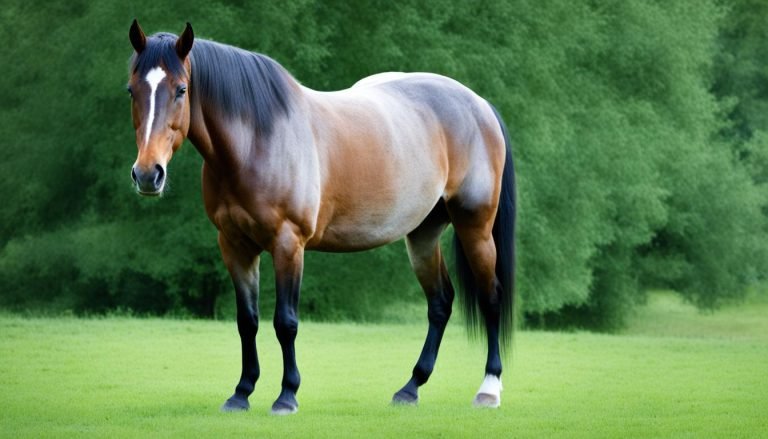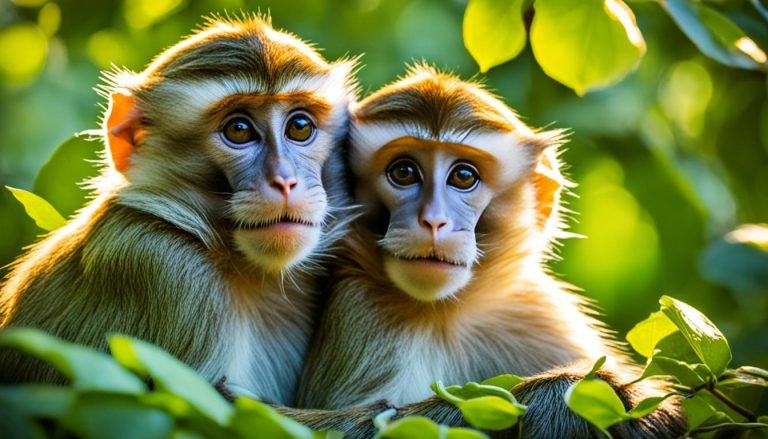How Big Can Lions Get? Lion Size Chart
Lions are often referenced as the kings of the jungle, undisputed rulers of their savannah domain. One of the reasons for their relentless dominance is their sheer size and strength, making them formidable predators.
In this article, we will explore the intricacies of lion size and growth, including their weight, height, and overall dimensions.
Key Takeaways:
- The size of a lion depends on various factors, including genetics, environment, and diet.
- Lions exhibit sexual dimorphism, with males significantly larger than females.
- The largest recorded lion weighed over 800 pounds.
- Understanding lion size and growth is crucial for conservation efforts.
- Preserving genetic diversity and maintaining healthy populations is essential for the survival of lions in the wild.
Lion Size and Growth: Understanding the Basics
Lions are among the largest members of the cat family, and their impressive size is determined by a range of factors.
Lion dimensions can vary depending on several factors, including genetics, diet, and environmental conditions. For instance, lions living in areas with abundant prey are known to grow larger than those living in less productive habitats. Male lions are generally larger than females, with an average weight range of 330-550 pounds for males and 265-395 pounds for females.
The lion growth rate can vary depending on these factors, as well as on the sex of the lion. Male lions typically continue to grow until around five years of age, while female lions are typically done growing by age three. After this point, the lions begin to reach their maximum size, though they may continue to add muscle and gain weight throughout their lives.
Lion Dimensions
The dimensions of lions are typically measured in terms of weight and height. On average, male lions stand about 4 feet tall at the shoulder and can reach up to 10 feet in length from head to tail. Females, on the other hand, typically stand about 3.5 feet tall at the shoulder and can reach up to 9 feet in length.
When discussing lion size, it is important to note that they can vary considerably depending on the subspecies. For example, the largest subspecies of lion is the “Barbary lion,” which is believed to have grown as large as 600 pounds in weight and 11 feet in length. Unfortunately, this subspecies is now extinct, making it impossible to verify these measurements.
| Male Lion | Female Lion | |
|---|---|---|
| Weight range | 330-550 pounds | 265-395 pounds |
| Average height at shoulder | about 4 feet | about 3.5 feet |
| Average length (head to tail) | up to 10 feet | up to 9 feet |
“The lion is, rightly known as the king of the jungle, and few animals can match its size and power.”
Average Size of Lions: How Big Can Lions Get?
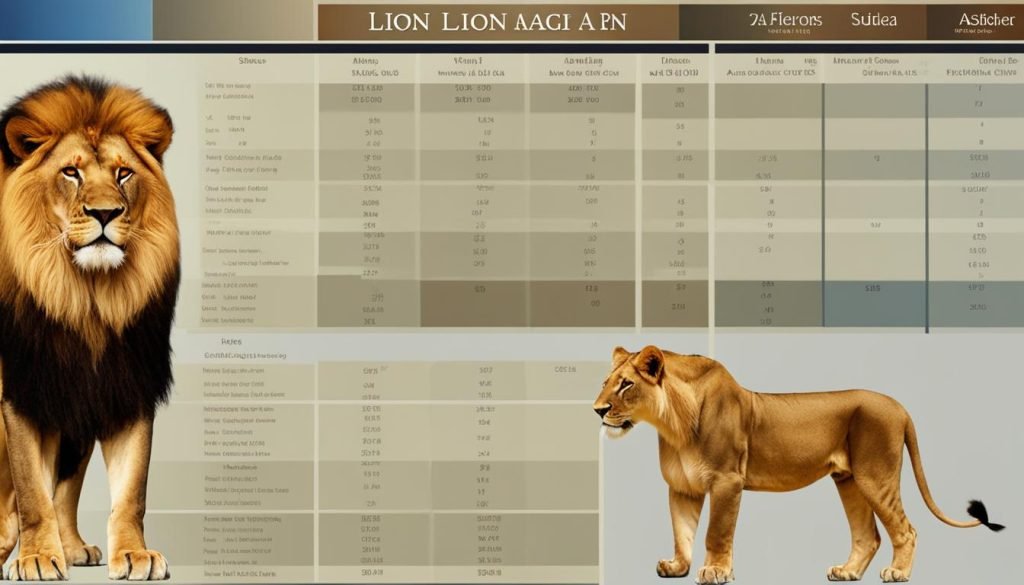
One of the most fascinating aspects of lion size is their sexual dimorphism. Males are significantly larger than females and can reach an impressive size. On the other hand, females are leaner, more agile, and play a crucial role in the lion pride. Understanding the average size of lions can provide valuable insights into their development and help appreciate their majestic presence.
Below is a comparison chart that showcases the average size of male and female lions at various stages of development:
| Age/Type | Lioness (Weight in kg) | Lion (Weight in kg) |
|---|---|---|
| Newborn | 1.2 – 2.5 | 1.2 – 2.5 |
| 1-3 months | 6 – 9 | 6 – 9 |
| 4-6 months | 18 – 25 | 20 – 30 |
| 7-12 months | 40 – 70 | 50 – 140 |
| 1-2 years | 60 – 120 | 90 – 190 |
| 2-3 years | 90 – 150 | 130 – 230 |
| 3-4 years | 120 – 185 | 150 – 250 |
| 4-5 years | 130 – 190 | 160 – 260 |
| 5-6 years | 135 – 195 | 170 – 270 |
As seen, lion size can increase dramatically in just a few years, showing their incredible growth potential. Lion Cubs usually weigh between 1.2-2.5 kg and can double their weight in just one week. Female lions reach maturity at around 2-3 years of age, while male lions take longer to reach full size and strength, at around 4-5 years.
Lion Cubs: From Tiny Beginnings to Future Kings
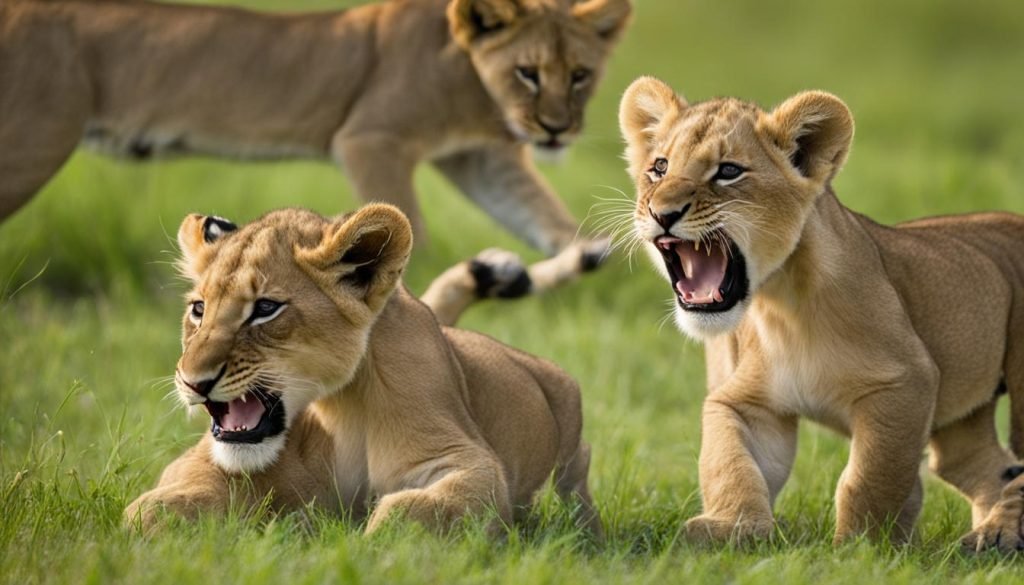
When lion cubs are born, they only weigh around 2 to 4 pounds, but they grow quickly and can gain over a pound each day during their first few months. By the time they are six months old, they can weigh between 50 to 75 pounds. Although their growth rate slows down after their first year of life, they continue to grow until they reach full maturity.
Lion cubs achieve several milestones throughout their growth journey. At around two weeks old, they open their eyes, and they start to walk around when they are three weeks old. They also begin to play with their siblings, which helps them learn important social skills and coordination. By the time they are six months old, they start to lose their baby teeth and gain their permanent ones, allowing them to eat solid food.
As with their adult counterparts, the growth rate of lion cubs is influenced by genetics, access to food and water, and environmental conditions such as climate and terrain. In areas with abundant food and water, lion cubs tend to grow more quickly than those in more challenging environments.
The Development Cycle of Lion Cubs:
| Age | Weight | Description |
|---|---|---|
| Birth | 2-4 pounds | Blind and helpless. |
| 2-4 weeks | 6-8 pounds | Eyes start to open. |
| 3-4 weeks | 10-15 pounds | Begin to walk around and play with siblings. |
| 6-8 weeks | 15-20 pounds | Start to eat solid food. |
| 3-6 months | 50-75 pounds | Develop adult fur and lose baby teeth. |
| 1 year | Same weight as female adults | Begin to hunt with the pride. |
| 2 years | Same weight as female adults | Start to develop mane (in males). |
| 3 years | Full adult weight | Fully independent and ready to mate. |
Males vs. Females: The Battle of Sizes
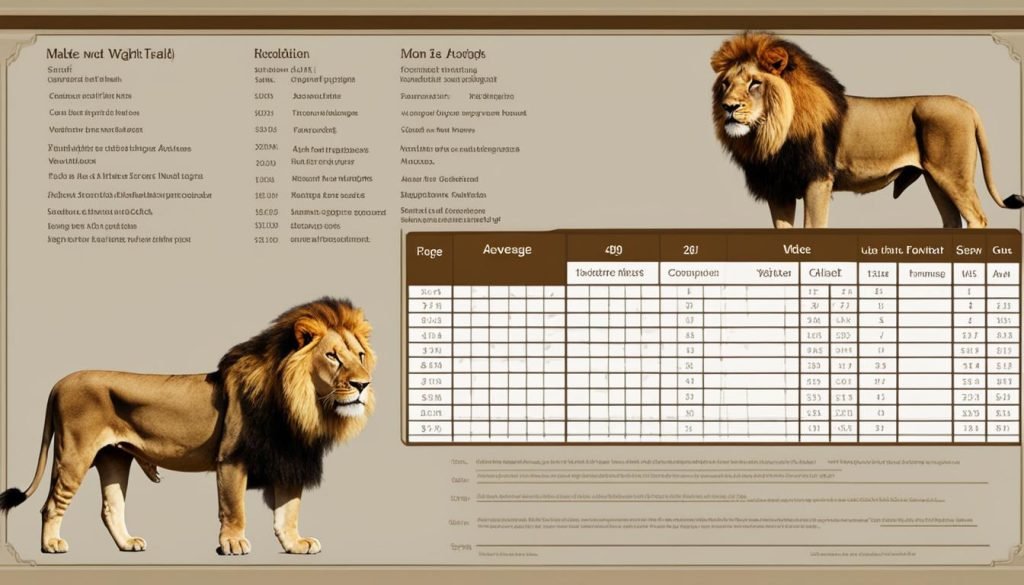
While lions are known for their impressive size, there is a significant difference between males and females in terms of both size and weight. In general, male lions are much larger and heavier than their female counterparts, which is known as sexual dimorphism.
The average male lion weighs between 330 and 550 pounds, while females typically weigh between 265 and 395 pounds (Lion Weight and Size). Males also stand taller at the shoulder, with a height that ranges from 3.5 to 4.5 feet, while females are slightly shorter, with a height of 3 to 3.5 feet (Lion Size and Growth).
There are several reasons behind this sexual dimorphism. Male lions are the protectors of the pride, responsible for defending their territory and offspring from rival predators. Larger size and strength give them an advantage in these fights. On the other hand, smaller females are more nimble and better suited to hunting, working together to take down prey.
To further understand the difference in size, take a look at the table below:
Comparison of Male and Female Lion Size and Weight
| Average Male Lion | Average Female Lion | |
|---|---|---|
| Weight | 330 – 550 pounds | 265 – 395 pounds |
| Height | 3.5 – 4.5 feet | 3 – 3.5 feet |
As this data shows, male lions outweigh and stand taller than females, with a significant difference in size (Lion Size and Growth). Understanding this sexual dimorphism is crucial to understanding the hierarchy within lion prides and the roles each member plays.
The Mighty Mane: A Symbol of Power and Dominance
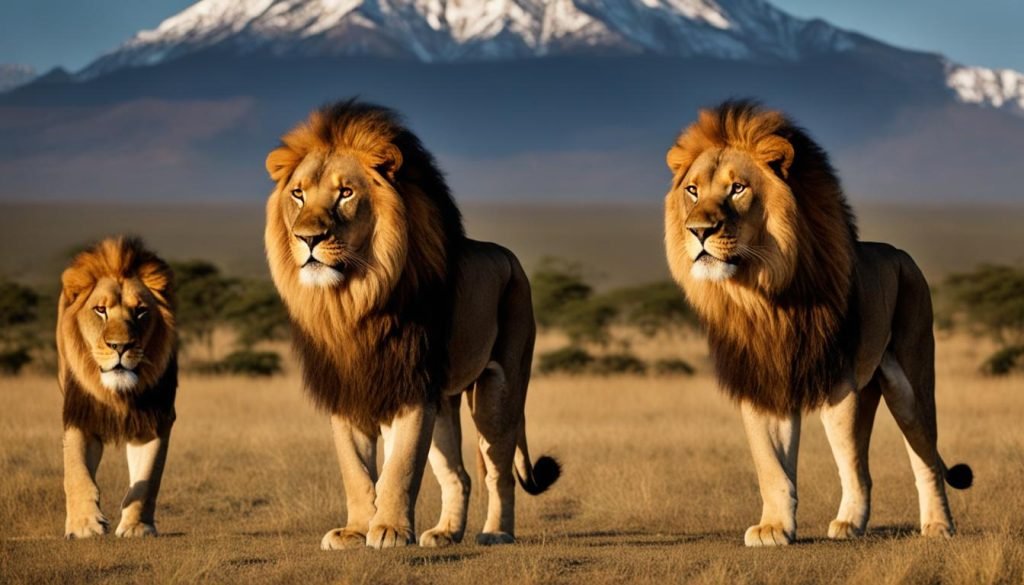
When it comes to lion size and growth, their impressive mane can be a significant indicator of their dominance and power. Male lions typically have fuller, more substantial manes that grow as they mature into adults. This development is related to testosterone levels and is often regarded as an essential visual element in determining a male lion’s strength and status in the pride.
Interestingly, mane size may also have an effect on a lion’s fighting ability. Research indicates that large and darker manes may signify a healthier lion, which in turn could indicate superior genetics and contribute to increased fighting ability. However, the correlation between mane size and lion fighting skill has not yet been fully established.
To better understand lion size and growth, it is worth exploring some of the largest lions ever recorded. One of the most massive lions was named “Chobe,” who weighed about 930 pounds and had a shoulder height of 1.25 meters. Another giant feline, “Sultan,” weighed over 900 pounds and was known for his formidable, extra-large mane.
As seen in the table below, these lions’ weight and height far surpass those of the average lion, highlighting the variability in lion size and growth across the species.
| Lion | Weight (lbs) | Shoulder Height (m) |
|---|---|---|
| Chobe | 930 | 1.25 |
| Sultan | 900 | 1.13 |
| Average Lion | 250-550 | 1-1.2 |
While these lions’ size and growth may seem extraordinary, keep in mind that these are exceptional cases, and most lions fall within the average range of 250-550 pounds and have a shoulder height of 1-1.2 meters. Nonetheless, there is no doubt that the size and power of these majestic creatures, paired with their magnificent manes, commands respect and admiration.
Factors Influencing Lion Size
Lions are some of the largest cats in the world, and their size can vary depending on several factors. These include:
| Factor | Description |
|---|---|
| Genetics | A lion’s genetic makeup plays a significant role in determining its size and growth rate. This includes factors such as inherited traits and DNA mutations that can affect growth hormones and bone density. |
| Nutrition | The amount and quality of food available can have a significant impact on a lion’s size and overall health. A diet rich in protein and nutrients is crucial for proper growth and development. |
| Territory | The amount of space available for a lion can also affect its size. Lions living in smaller territories may experience competition for resources, leading to stunted growth and smaller sizes. |
Understanding these factors is essential for researchers and conservationists working to preserve lion populations and maintain genetic diversity. By accounting for these influences on lion size and growth rate, experts can make informed decisions and develop effective conservation strategies.
It’s important to note that while there may be an upper limit to the size a lion can reach, with the largest individuals on record weighing up to 600 pounds, there is no definitive maximum lion size. Lions continue to grow and develop throughout their lives, with males generally larger than females.
Evolutionary Significance of Lion Size
For lions, size matters. These majestic creatures’ impressive dimensions have played a critical role in their survival and evolution. Lion size allows them to be effective hunters and maintain their dominance within ecosystems.
The primary factor influencing lion size is genetics. Through natural selection, lions with larger sizes have a better chance of survival and reproduction, passing on their genes to future generations.
Another critical factor is their environment, as lions need expansive territories to roam and hunt for prey. A healthy habitat and abundant food supply can lead to a better growth rate and larger size.
Interestingly, lionesses have also evolved to have a smaller size than their male counterparts. This sexual dimorphism correlates with their respective roles in the pride, with males taking on the role of protectors and females doing most of the hunting.
The evolution of lion size is a fascinating subject and sheds light on the intricate workings of ecosystems. By understanding the significance of their size, we can gain a deeper appreciation for these magnificent creatures and continue to work towards their conservation.
Lion Size Compared to Other Big Cats
While lions are often referred to as the “king of the jungle,” they are not the largest big cat species. Tigers, for example, are generally larger and heavier than lions. However, size is not the only factor that determines the power and dominance of a big cat.
On average, adult male lions weigh between 330-550 pounds and measure approximately 4-5 feet in height at the shoulders. Female lions are smaller, weighing between 265-400 pounds and measuring 3.5-4 feet in height. In comparison, adult male tigers weigh between 400-700 pounds and can measure up to 3.9 feet in height at the shoulders. Female tigers weigh between 265-400 pounds and can measure up to 3.6 feet in height.
Leopards are another large feline species that are often compared to lions. Adult male leopards weigh an average of 130-220 pounds and have an average height of 2.2-2.8 feet at the shoulders. Female leopards can weigh between 66-155 pounds and are 1.8-2.1 feet in height.
Despite being smaller than tigers, lions remain impressive animals with unique features that set them apart. Their iconic manes and social behaviors are just a couple of examples of what makes them special.
“Lions exhibit sexual dimorphism, with males being significantly larger than females.”
Environmental Factors and Size Variations
The impressive size of lions can be influenced by various environmental factors, including the availability of food and habitat conditions. In areas with abundant prey, lions can grow larger and exhibit a higher growth rate compared to regions with scarce resources.
One study conducted in Tanzania revealed that lions residing in regions with high prey density and access to water sources exhibited significantly larger body sizes compared to lions inhabiting areas with lower food availability and limited water sources (Azevedo et al., 2017).
Moreover, habitat loss and fragmentation can also affect lion size and growth potential. In cases where lion populations are isolated, genetic diversity is reduced, and lions may exhibit a smaller size due to inbreeding (Riggio et al., 2013).
Case Study: The Impact of Human Activity on Lion Size
The human-wildlife conflict has been a significant threat to lion populations, primarily due to habitat destruction and fragmentation, poaching, and prey depletion. In areas with high human activity, lions may exhibit a smaller body size due to reduced food availability and disrupted migration patterns. For example, a study conducted in Botswana found that areas with high human density resulted in lions with smaller body sizes compared to areas with low human activity (Mosojane et al., 2018).
Conservation efforts that aim at preserving large protected areas, reducing human-wildlife conflict, and maintaining healthy prey populations can help ensure the continued growth and survival of lions in the wild. By protecting the diverse ecosystems in which lions thrive, we can help maintain their impressive size and dominant nature.
Implications for Conservation Efforts
As we have learned throughout this article, understanding lion size and growth trends is essential for conservation efforts. When it comes to maintaining healthy lion populations, preserving genetic diversity is crucial. This means protecting lions’ natural habitats and ensuring they have access to adequate food sources.
Conservationists also need to monitor lion growth rate and population size carefully to track any changes and respond accordingly. By doing so, they can help ensure the continued survival of these magnificent creatures in the wild.
“It is not enough to understand the natural world; the point is to defend and preserve it.” – Edward Abbey
Appreciating the Magnificence of Lion Size
Now that we have explored the incredible size and growth potential of lions, it’s time to appreciate the magnificence of these colossal felines. The largest lions ever recorded have left us in awe of their sheer size and weight, showcasing the incredible potential of this species.
One of the largest recorded lions was a male named “Bia,” who weighed in at a whopping 826 pounds. This massive animal lived in Kruger National Park in South Africa and demonstrated the impressive dimensions that lions can attain.
Another famous lion known for his remarkable size was a male from the Tsavo region in Kenya. This lion, famously known as the “Ghost and the Darkness,” weighed in at around 500 pounds and is believed to have been responsible for several human fatalities in the late 19th century.
These examples highlight the true potential of the lion species and their incredible size and power. From their immense weight to their impressive mane, lions are undoubtedly one of the most magnificent creatures on the planet.
As we continue to study and understand lion size and growth, it is essential to appreciate their unique characteristics and the role they play in the animal kingdom. By preserving their genetic diversity and protecting their habitats, we can ensure the continuation of these incredible creatures for generations to come.
So, to answer the question “How Big Can Lions Get?” – the sky is the limit. With the right environmental conditions and genetics, lions have the incredible potential to reach immense size and weight, leaving us in awe of their magnificence.
Let’s continue to appreciate and protect these awe-inspiring creatures so that future generations can witness the beauty and power of lions in their natural habitats.
More About Lions:
- What Do Lions Need To Survive? Habitat, Diet & More
- What Do Lions Do All Day?
- What Do Lions Do During the Night?
- How Do Lions Communicate With Each Other?
- Where Do Lions Sleep?
- How Fast Can Lions Run?
- Can Lions Swim? Lion’s Swimming Ability Examined
- Cannibalism in Lions: Do Lions Eat Other Lions?
- How Long Are Lions Pregnant? Gestation Period
- Do Lions Hibernate During Winter?
- How Much Do Lions Weigh? Lion’s Weight Revealed






